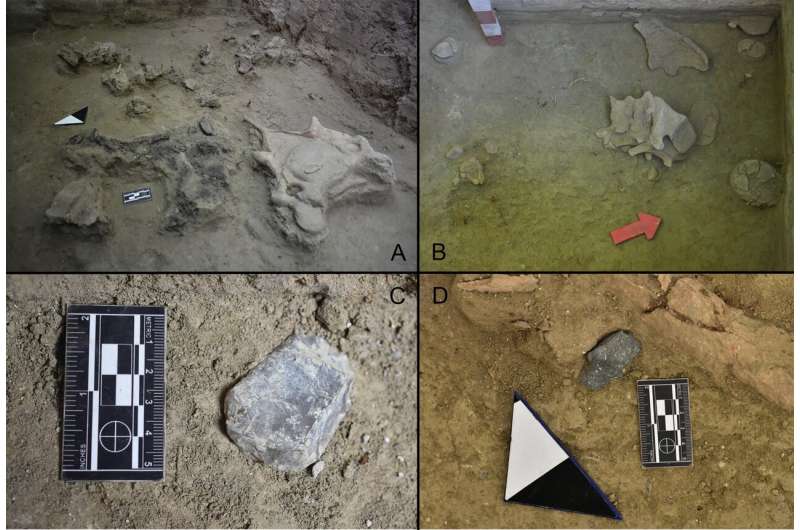This article has been reviewed according to Science X's editorial process and policies. Editors have highlighted the following attributes while ensuring the content's credibility:
fact-checked
peer-reviewed publication
trusted source
proofread
Ancient people hunted now extinct elephants at Tagua Tagua Lake in Chile 12,000 years ago, study finds

Thousands of years ago, early hunter-gatherers returned regularly to Tagua Tagua Lake in Chile to hunt ancient elephants and take advantage of other local resources, according to a study published May 22 in the open-access journal PLOS ONE by Rafael Labarca of the Pontifical Catholic University of Chile and colleagues.
Multiple archaeological sites are known from the region of Tagua Tagua Lake in central Chile, representing some of the earliest known human settlements in the Americas. In this study, Labarca and colleagues report the recent discovery of a new site called Taguatagua 3, an ancient hunter-gatherer camp dating to the Late Pleistocene, between 12,440–12,550 years old.
Notably, this site features the fossil remains of a gomphothere, an extinct relative of elephants. Signs of butchery on the bones, along with stone tools and other evidence, indicate that Taguatagua 3 represents a temporary camp established around the task of processing the large carcass.
Other activities were also carried out during the camp's brief period of use, including processing of other foods as indicated by additional charred remains of plants and small animals such as frogs and birds. Fossil cactus seeds and bird eggshell suggest that this camp was occupied specifically during the dry season.
Numerous such sites of similar age are now known from this region, implying that Tagua Tagua Lake was a recurring hunting and scavenging ground for people during the Late Pleistocene due to abundant and predictable local resources.
The authors suggest that this area was a key location along the routes taken by mobile communities of the time and that temporary camps might have hosted regular meetings between these mobile bands. Further investigation of this rich archaeological region will continue to provide insights into the mobility and subsistence strategies of early humans in South America.
The authors add, "Taguatagua 3 helps us to understand better how the early humans adapted to fast changing environments in central Chile during the late Pleistocene times."
More information: Taguatagua 3: A new late Pleistocene settlement in a highly suitable lacustrine habitat in central Chile (34°S), PLoS ONE (2024). DOI: 10.1371/journal.pone.0302465
Journal information: PLoS ONE
Provided by Public Library of Science





















